The story behind the 19th century Binghamton Water Cure
A while ago, I wrote a column about Dr. Orson Valentine Thayer – an Otsego County-born physician who made an impact in the Binghamton area. Along with his young wife, Harriet, and family, they moved into the Binghamton area about 1849 to begin a unique chapter in the region’s history. Thayer was what he described as an allopath – a description that was also called heroic medicine or homeopathic medicine.
Not surprising then that Thayer, upon his arrival, set out to create a facility where he could practice his form of medicine. So, in that year, he purchased land atop Mount Prospect in the First Ward of the village of Binghamton and formed the Binghamton Water Cure. This plot of land would later be the approximate location of the entrance to Ely Park on Prospect Street. Thayer went about having a hotel built near the mineral spring waters that he insisted could offer “cures” to a number of ailments.
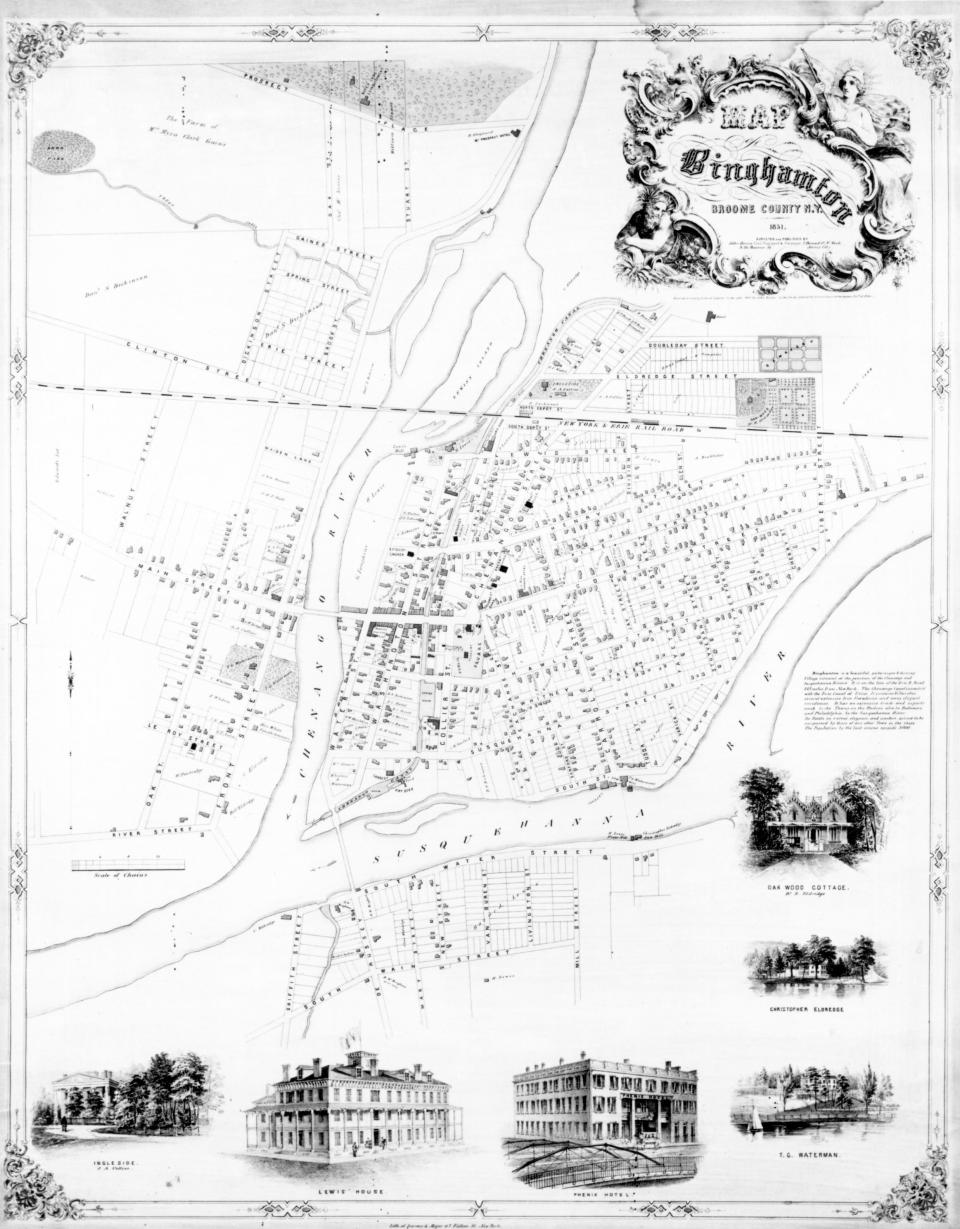
Thayer and his family lived in a house on the grounds of the Binghamton Water Cure, and by the 1855 New York State Census, the Binghamton Water Cure had over 50 patients living at the facility in hopes for their own cure. This was the promise of Saratoga Springs, Ballston Spa and other curative facilities, and the Binghamton Water Cure was one of many offering the hopes that there were magical effects to the mineral waters flowing from the mountaintop.
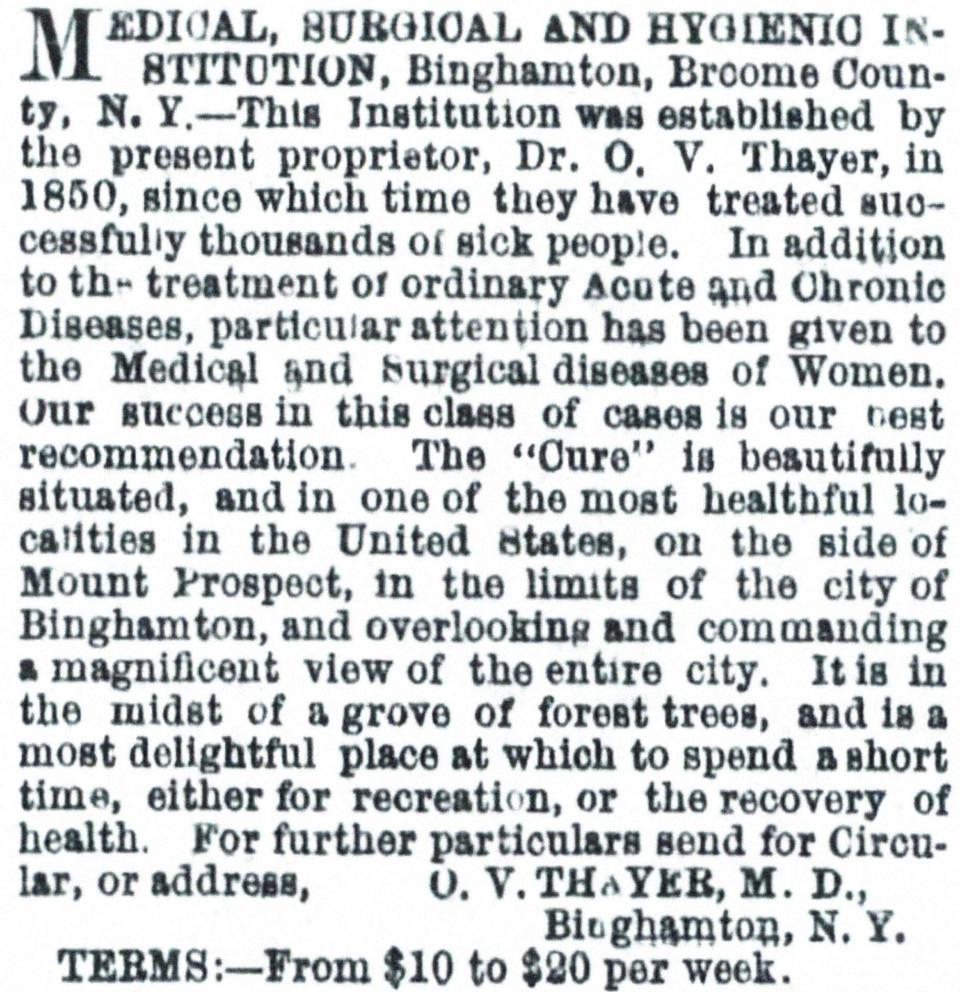
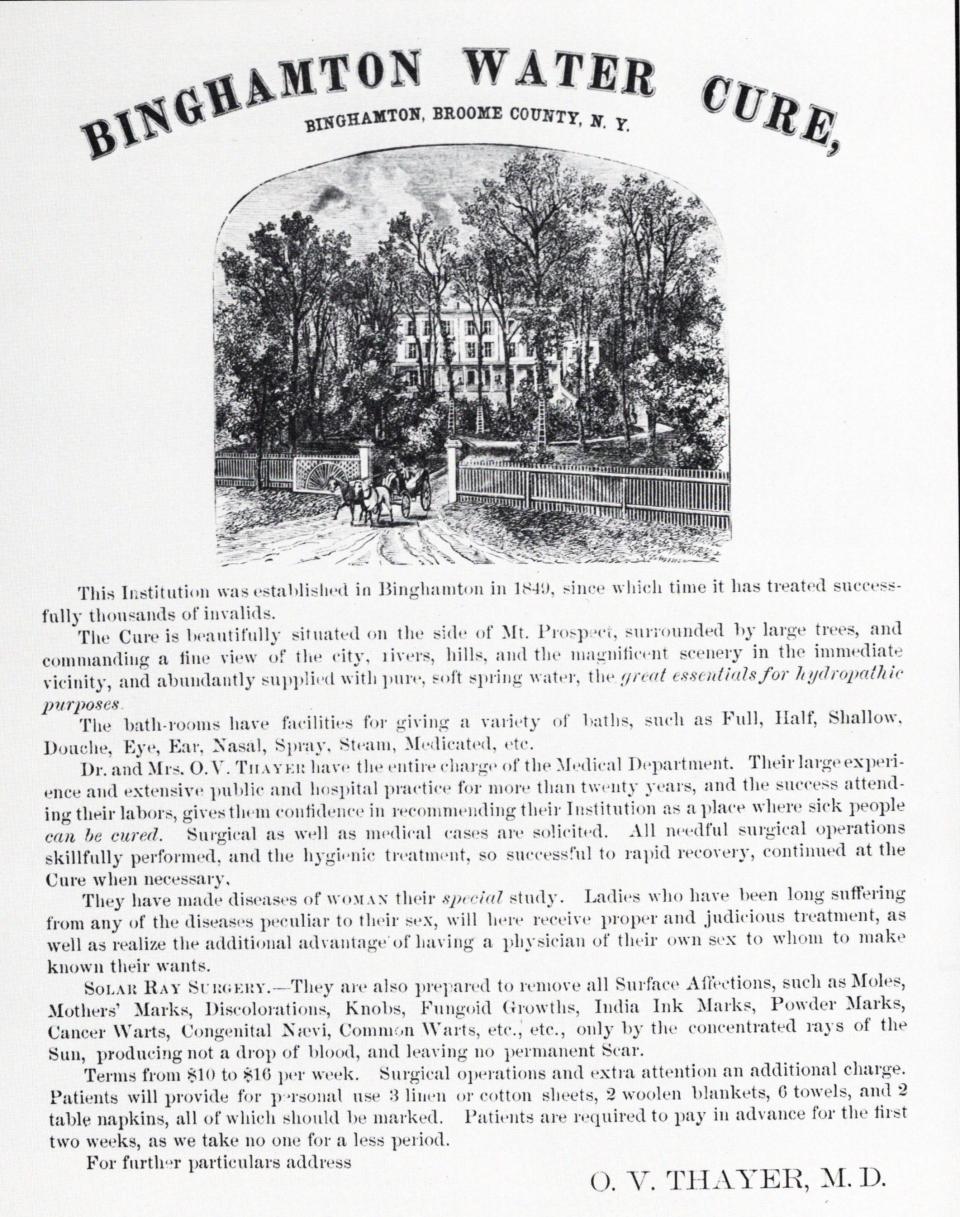
Patients came from all around the state and other states like Pennsylvania, and even several from Ireland. All had hopes that whatever their illness, this would provide a path toward a cure. In addition, Dr. Orson Thayer offered to use sunlight as a form to cure cancer. If this all sounds beyond belief, one of the advertisements for the Binghamton Water Cure that appeared in a Schoharie, New York newspaper in the 1860s was directly above an ad for the “circus” offered by P.T. Barnum. Perhaps there were many ways to prove that there was, indeed, a sucker born every minute.
From the 1850s through the mid-1870s, Thayer ran the Binghamton Water Cure operation, and his wealth seemed to increase. He had a home on Stuyvesant Street that he rented out, although it was to pimps and prostitutes. Thayer’s home had several domestic servants waiting on the couple and their children. About 1876, Thayer decided to make a change.
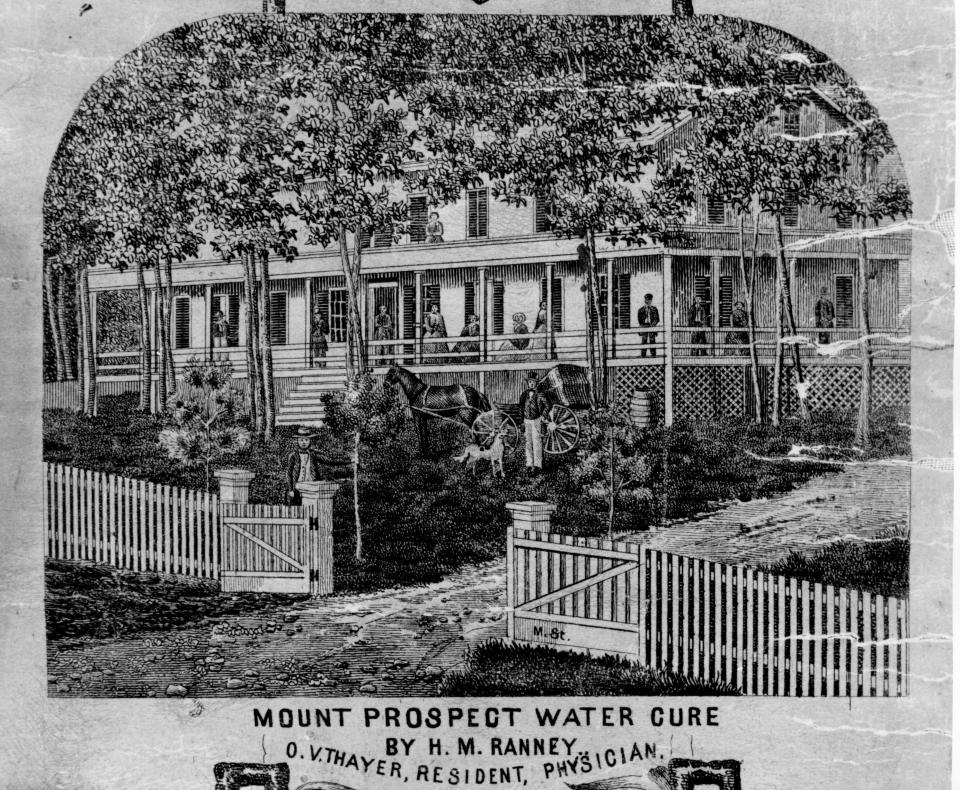
He saw more opportunities in the western United States, and decided to sell the Binghamton Water Cure to a Dr. Pierce. In that year, Thayer and his family moved to San Francisco, where he continued his homeopathic medicine practice. He would eventually end up in the San Diego area, where he died in 1929, and, according to California records, he was buried at sea.
That, however, is not the end of the Binghamton Water Cure. Dr. Pierce ran the facility for a very short time, as the wave of belief in this type of curative water facility was waning around the country. The era of quackery was moving away from curative waters and toward patent medicine, such as Dr. Kilmer’s Swamp Root medicine.
Food & drink: With pumping music and dancing employees, this new coffee shop promises a vibe
Courts: Owego shredding facility agrees to $400K fine to settle Clean Air Act allegation
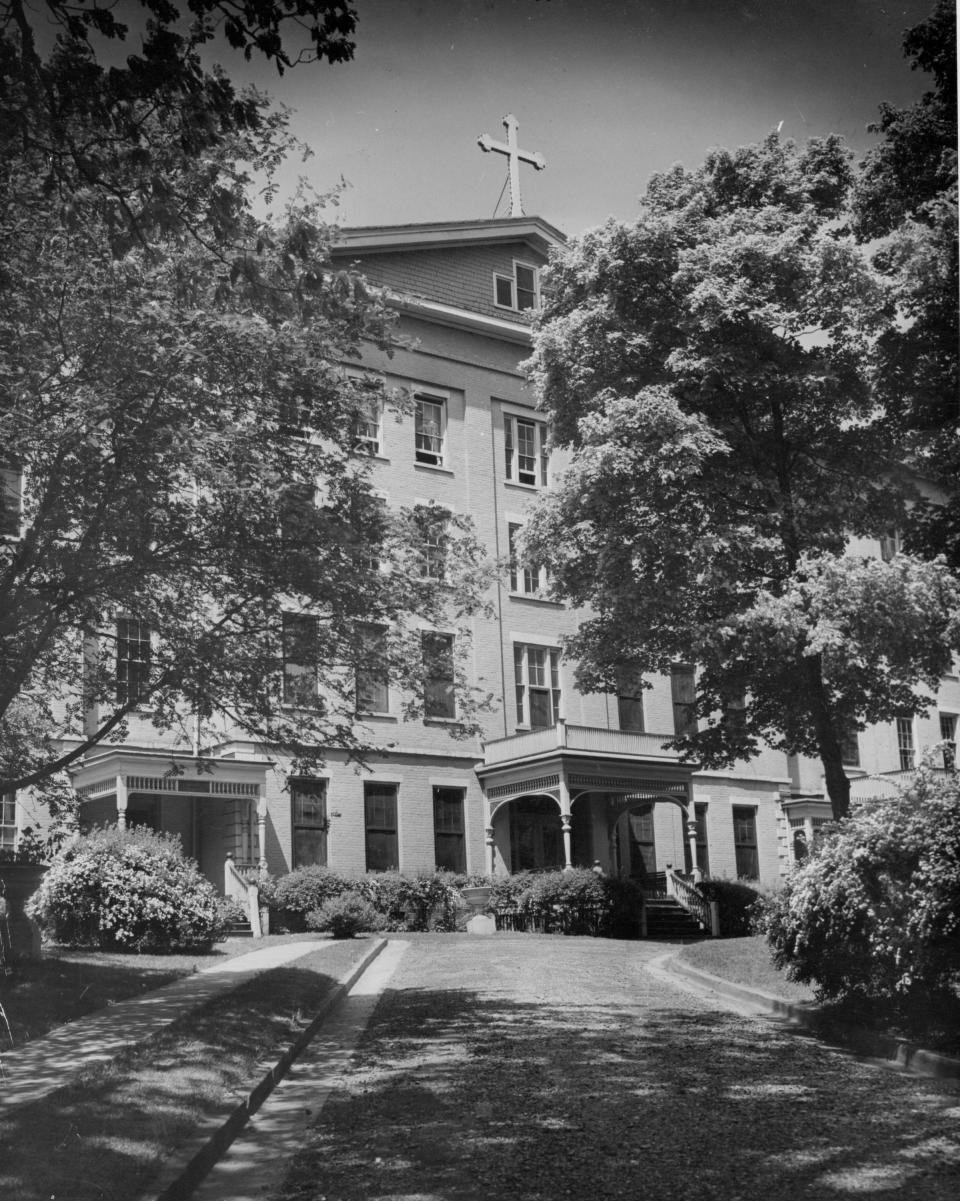
The facility closed its doors to patients, but it had one more chapter in its life. For a short while it became the first home to St. Patrick’s Catholic Church’s Father Hourigan’s vision of St. Mary’s Orphanage. He wanted a facility, and this was an available option. It was not the final option – as the former Binghamton Ladies College became available on Chestnut Street, and it provided the space and better option for an orphanage that would last nearly a century. That orphanage is now the site of the Seton Catholic Central High School.
What of the Binghamton Water Cure? It was once again empty, and fire claimed the complex shortly after that point in the 1880s. The mineral water, though, continued to flow. It became the source for the Binghamton Brewing Company located below the hill between Oak Street and Spring Forest Cemetery. This brewery was one of several in the area, and would operate well into the early years of the 20th century. From waters that could cure you to waters that could quench your thirst.
Gerald Smith is a former Broome County historian. Email him at historysmiths@stny.rr.com.
This article originally appeared on Binghamton Press & Sun-Bulletin: Binghamton history includes the 19th century Water Cure

